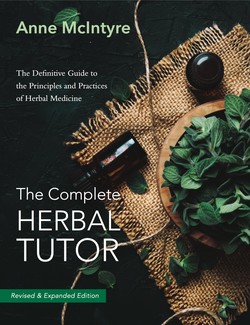Читать книгу The Complete Herbal Tutor - Anne Mcintyre - Страница 27
ОглавлениеHealing the Whole Person
Modern medical herbalism is a synthesis of ancient and modern theories and practices. Its underlying philosophy is that health is intimately connected to the harmony of body, mind and spirit, which enables a balance of natural forces in the body. In a clinical context the herbalist will interpret symptoms of ill health as a disturbance of this balance, and consider them in the context of the patient as a whole, their lives, both inner and outer.
As Dr Edward Bach, famed for his flower remedies, said: “…disease of the body itself is nothing but the result of the disharmony between the soul and mind” and “…health is therefore the true realisation of what we are; we are perfect; we are children of God.”
The now familiar World Health Organisation's definition of health as: “The condition of perfect bodily, spiritual and social well-being, and not solely the absence of disease and injury,” is a lofty aim, but certainly one that the herbal practitioner aspires to. We are not here solely to relieve symptoms. Bearing this in mind, ideally herbs are prescribed not only to redress specific imbalances but also to attend to the deeper causes of imbalance within a framework of life-affirming lifestyles and eating habits.
In their “holistic” approach, the herbalist recognises that our bodies are made up of a complex organisation of tissues and cells that operate on a molecular level, and yet the human organism is so much more than this. Behind the physical manifestation that is the body is the existence of subtle energy, which is recognised by mythology and religion, but largely denied by modern science. It is known throughout the world by different names – life-force, vital-force, qi, and prana. We can neither see it nor define it, but it is there, and we are animated by this living force on every level of existence: physical, emotional, mental and spiritual.
Through this we have an inherent ability to regulate the functions of the body and to heal ourselves, something that is known in the West as homoeostasis. When our life-force is disturbed on any level, the health of the whole person is affected, and illness results. Body, emotion, mind and spirit form one inter-related system, and an imbalance in one creates disharmony in another. Symptoms of ill-health in the body represent the attempt by our whole being to correct the imbalance and heal itself. If these symptoms are suppressed, as they are by modern drugs, the energy of the vital force is depleted, our healing ability dwindles and finally chronic illness results.
The body needs to be permitted to express its symptoms as far as possible, and any treatment should be aimed at augmenting the efforts of the vital force, to enhance its healing energy and not work against it. The task of the herbalist is to analyse a patient's presenting symptoms in this respect and support their homoeostatic mechanisms through counselling, the use of herbs and foods and lifestyle guidance. A maxim of natural therapy is that medicine cannot change the workings of the body, it can only help them. One of the oldest medical teachings says: “Medicus curat, natura sanat” (“the doctor treats, but nature heals”).
Using Herbs as Medicines
Herbalists use the leaves, flowers, stems, berries, roots or seeds of medicinal plants as their therapeutic tools. By definition a herb is any plant that has a medicinal action in the body, and this includes most fruits and vegetables. In fact herbs act very much like foods, and many common foods are used for their medicinal actions: carrots are good for skin and urinary problems; oats are a great tonic to the nervous system, garlic fights infection, regulates blood pressure and prevents cholesterol and blueberries combat free radicals, strengthen blood vessels and help prevent urinary tract infections.
Plants absorb, process and store vital nutrients from the soil, providing raw materials (close in chemical composition to those that make up the human body) for the growth and repair of all bodily tissues that are easily digested and assimilated. Their vitamins, minerals, and trace elements are vital for health and recovery, while other medicinal substances such as tannins, volatile oils, phenols and saponins have affinities for particular tissues and systems and act more specifically to promote homeostasis and healing.
Clearly, then, herbs operate at the level of biochemical reactions in the body, but they are capable of much more. They certainly provide us with a wealth of wonderful chemicals but their healing power goes far beyond the physical to the realms of the vital force. When herbs work in the body they enhance the healing action of this force and as they do this they may also heal our hearts and minds, for they help to restore harmony to an integrated whole.
Qi, or life force, flows along energy channels, or meridians. This manuscript depicts the Conception Vessel meridian.
